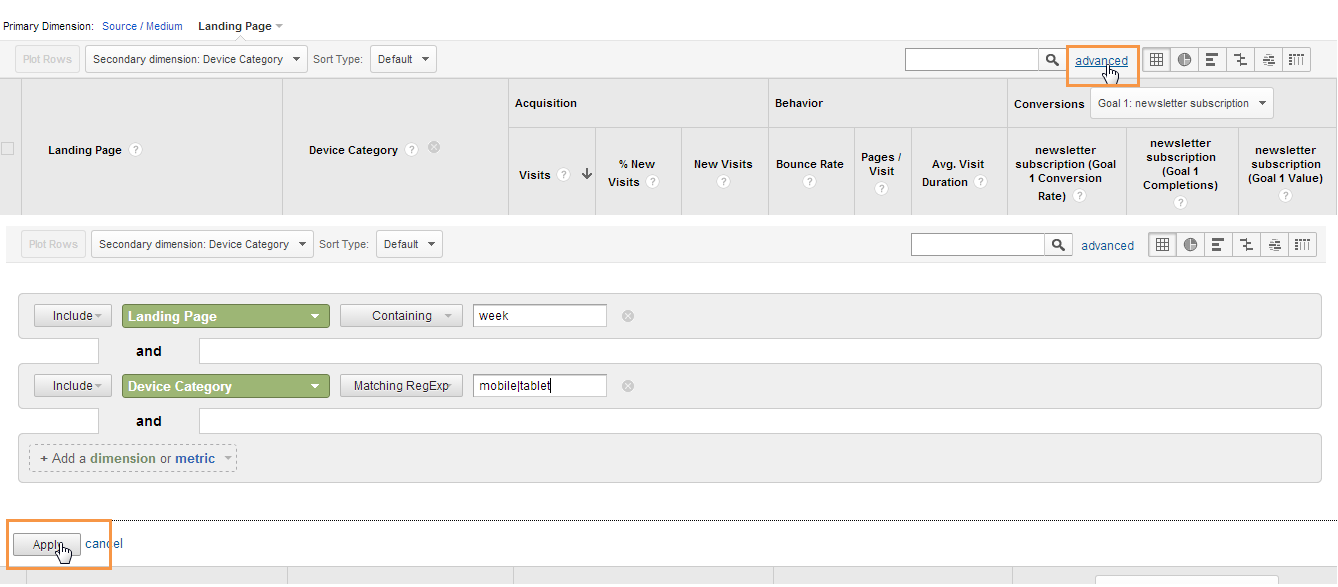The Power of Google Analytics Secondary Dimension: Making The Most Of Insights
The Power of Google Analytics Secondary Dimension: Making The Most Of Insights
Blog Article
Unlocking the Power of Additional Dimension Analytics for Boosted Data Insights and Decision-Making
In the world of information analytics, main dimensions frequently take the spotlight, but the true deepness of insights lies within the world of additional measurements. By taking advantage of the power of second dimension analytics, organizations can unveil covert trends, uncover relationships, and extract extra purposeful conclusions from their information.
Relevance of Additional Measurements
Discovering the relevance of secondary measurements in analytics reveals the covert layers of information understandings critical for educated decision-making in different domains. Additional measurements supply a much deeper understanding of key data by providing additional context and viewpoints. By integrating secondary dimensions into analytics, organizations can remove much more nuanced and extensive understandings from their datasets.
One trick importance of additional measurements is their capability to section and categorize primary information, permitting a more detailed evaluation of details subsets within a dataset. This division enables companies to recognize patterns, patterns, and outliers that may not appear when taking a look at the information all at once. Secondary dimensions help in revealing relationships and dependences in between different variables, leading to even more exact projecting and anticipating modeling - secondary dimension.
Furthermore, secondary measurements play a critical function in enhancing data visualization and reporting. By adding additional measurements to visualizations, such as charts or graphs, experts can produce extra insightful and interesting representations of data, helping with better interaction of searchings for to stakeholders. On the whole, the assimilation of additional dimensions in analytics is critical in unlocking the full capacity of data and driving evidence-based decision-making.
Key Advantages of Utilizing Second Dimensions
Utilizing second measurements in analytics provides companies a strategic benefit by increasing the deepness and granularity of data insights. One crucial advantage of including secondary dimensions is the ability to section and filter information, enabling an extra in-depth evaluation of particular facets within a dataset. This segmentation enables companies to get a much more nuanced understanding of their audience, efficiency metrics, and other essential data factors. By exploring data using second dimensions such as time, location, device type, or user demographics, companies can uncover patterns, patterns, and relationships that may or else continue to be hidden.
Moreover, the use of additional dimensions boosts the context in which key information is interpreted. It provides an extra detailed sight of the connections in between various variables, allowing companies to make informed decisions based upon an extra holistic understanding of their information. Furthermore, secondary measurements promote the recognition of outliers, abnormalities, and locations for optimization, eventually leading to a lot more reliable strategies and improved outcomes. By leveraging additional measurements in analytics, organizations can harness the complete potential of their data to drive far better decision-making and attain their organization goals.
Advanced Information Analysis Strategies
A deep study innovative information evaluation strategies exposes innovative techniques for removing important understandings from intricate datasets. One such method is artificial intelligence, where algorithms are employed to identify patterns within information, forecast outcomes, and make data-driven decisions. This method enables the automation of logical version structure, allowing the processing of large volumes of information at a much faster rate than traditional approaches.
One more sophisticated strategy is predictive analytics, which uses analytical algorithms and machine knowing techniques to anticipate future outcomes based upon historical information. By assessing patterns and trends, organizations can expect customer More hints actions, market fads, and potential dangers, equipping them to make aggressive choices.
In addition, message mining and sentiment analysis are important methods for drawing out insights from unstructured data resources such as social networks remarks, client evaluations, and survey reactions. By examining text data, organizations can understand client point of views, identify arising patterns, and enhance their solutions or products based upon feedback.
Enhancing Decision-Making With Additional Measurements

Enhancing decision-making through additional measurements allows businesses to make even more informed and targeted strategic selections. By segmenting consumer data based on second measurements like purchasing background or interaction degrees, firms can customize their marketing approaches to specific target market sectors, leading to enhanced conversion rates and consumer complete satisfaction. Additional dimensions can assist determine connections and connections between different variables, allowing organizations to make data-driven choices that drive development and productivity.
Applying Secondary Measurement Analytics
When integrating second dimensions in analytics, companies can unlock deeper insights that drive strategic decision-making and enhance general performance. This requires recognizing the certain questions the organization looks for to respond to and the information factors needed to resolve them.

Moreover, companies should take advantage of advanced analytics devices and technologies to streamline the procedure of including second dimensions. These tools can automate information handling, evaluation, and visualization, enabling organizations to concentrate on analyzing understandings as opposed to hand-operated information control.
Verdict
In conclusion, additional dimension analytics play a critical role in improving information insights and decision-making procedures. By making use of sophisticated data analysis techniques and implementing additional measurements properly, organizations can open the power of their data to drive strategic business decisions.
In the realm of data analytics, primary dimensions typically take the limelight, however the real deepness of insights lies find out this here within the realm of secondary dimensions.Utilizing secondary dimensions in analytics provides companies a critical benefit by increasing the depth and granularity of information insights. By leveraging secondary dimensions in analytics, organizations can harness the full possibility of their information to drive far better decision-making and attain their company objectives.
Applying information recognition procedures and normal audits can help keep information high quality and reliability.
By utilizing sophisticated data analysis methods and implementing additional measurements successfully, companies can open the power of their data to drive calculated business decisions.
Report this page